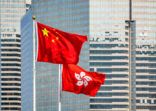ETF assets continue to grow in Asia-Pacific (ex-Japan), with AUM reaching a record high of $179bn as at end-August 2018, up from $126bn in 2016, according to data from ETF research and consulting firm ETFGI.
However, the region still only accounts for 3% of the $5.07trn global ETF market. In addition, the growth in assets is largely driven by institutional investors, unlike in the US and Europe where retail buyers are key participants.
Distribution remains a key factor, according to Rebecca Sin, head of ETF sales trading for Asia at Commerzbank.
“In the US, you have a lot of robo-advisors [that utilise ETFs], while in Asia, this hasn’t caught on yet,” she said during the ETFs Global Markets Roundtable event in Hong Kong, organised by ETFGI and Capital Markets Strategies.
In addition, although the number of robo-advisors is increasing in this region, retail investors still don’t see ETFs as a primary investment choice.
“Most Asian investors would invest in property before they invest into an ETF, while in the US, most people will invest in ETFs first. So education is really key,” Sin added.
Retrocessions a hindrance
The commission-based model is another hurdle in Asia-Pacific, she said, adding that Australia is the only country in the region where retrocessions are banned.
“The model of distribution in Asia is still very much through private banks, where you have a private banker or relationship manager who is not incentivised to sell ETFs. They are incentivised to sell structured products and mutual funds because they get higher commission,” she explained.
In Hong Kong, sales commissions and fees for advice have been key topics of a year-long consultation on the Securities and Futures Commission’s proposals to enhance asset management regulation.
In November last year, the regulator said it will not adopt a fee-for-advice model, but noted that it will “keep under consideration the merits of pay-for-advice models taking into account local and international market and regulatory developments”.
“The SFC did look at pay-for-advice, but in its view Hong Kong was not ready for that model because very few people in Hong Kong pay for advice and there was a risk of an advice-gap opening up if you use that model,” Paul Moloney, Hong Kong-based partner for investment funds and asset management at law firm Eversheds Sutherland, told FSA previously.
Commerzbank’s Sin believes a change in regulation will significantly drive pick-up of ETFs among retail investors.
“You would need a real change in that incentive model and how investors are investing before you can actually get ETFs to pick up at the retail level,” she added.
Attraction of fixed income ETFs
Turning to institutional investors, Sin said they have become more familiar with ETF investing due to widespread educational efforts from ETF issuers.
“We’ve seen clients this year start off with zero assets in ETFs and increase their portfolios to $5bn of AUM in fixed income ETFs,” she said.
A lot of institutional investors in Asia, as well as globally, have been drawn to fixed income ETFs. Year-to-date ending August, fixed income ETFs in Asia-Pacific (ex-Japan) gathered inflows of $6.14bn, greater than the $1.33bn during the same period last year, according to ETFGI data.
“In Asia, institutional investors want an Asian fixed income product. However, there isn’t enough liquidity in the underlying bonds. Because of this, they would [invest in the European and US markets] because they are larger,” Sin said.
There are only a few fixed income ETFs in Asia. In Hong Kong, the number is 11, out of around 111 products listed on the bourse, according to data from the Hong Kong Exchange. In Singapore, there are only 5 fixed income ETFs out of the 52 products listed on the local bourse.
“Asia is still lagging Europe and the US significantly, so there is still a lot of growth potential in terms of how institutional clients are using ETFs, whether it is for cash equitisation, asset allocation or satellite positioning,” added Sin.

















